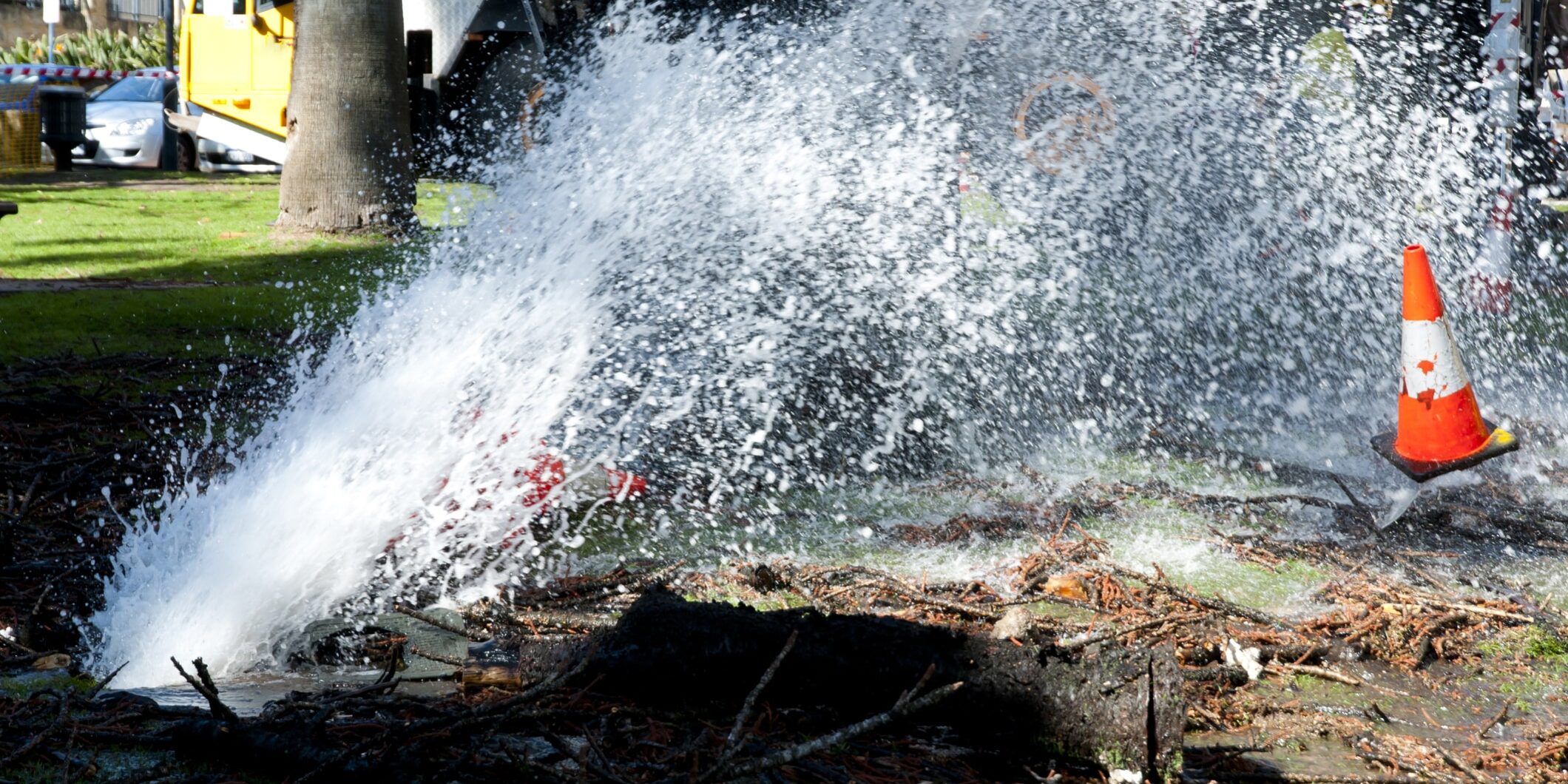Water is the lifeblood of our communities, and the intricate network of pipelines that crisscrosses beneath our feet ensures its smooth flow to our homes and businesses. However, the silent threats of structural failures in water pipelines can disrupt this essential service, causing inconvenience, financial strain, and potential harm to the environment.
We dive into the depths of pipeline management to uncover the five crucial aspects that water utilities, shires, municipalities, and councils in Australia and New Zealand must be aware of to safeguard their water networks.
Understand the Culprits: Aging Infrastructure, Corrosion and Pressure Transient Conditions
One of the primary causes of structural failures in water pipelines is the aging infrastructure. Many water pipelines in Australia and New Zealand have been in service for decades, facing the natural wear and tear that accompanies the passage of time. Coupled with this, corrosion poses a significant threat, especially in regions with aggressive soils or corrosive water. Identifying and addressing these issues proactively can extend the lifespan of pipelines, saving utilities from the substantial costs associated with emergency repairs and service interruptions.
Pressure transient events are variations in pressures caused by fast changes in flow. On a calm supply network, such variations are typically small, resulting in low magnitude pressure transient events. However, not all networks are calm and large flow changes, both positive and negative, can lead to both vacuums (column separation), risking the network and accelerating pipeline failures. In the more extreme scenarios, pipe breaks or catastrophic failures can occur, costing the water utility hundreds of thousands of dollars in repairs.
Invest in Advanced Monitoring Technologies
Prevention is always better than cure, and this holds true for water pipeline management. Embracing advanced monitoring technologies can be a game-changer for utilities. Implementing real-time monitoring systems that utilise sensors, artificial intelligence, and data analytics allows for the early detection of anomalies such as leaks, pressure fluctuations, and structural weaknesses. By investing in these technologies, utilities can significantly reduce the likelihood of pipeline failures, saving both time and money.
Prioritise Regular Inspections and Maintenance
Regular inspections and proactive maintenance are the backbone of a robust water pipeline management strategy. Utilising state-of-the-art non-destructive and non-invasive inspection tools, enables utilities to conduct thorough assessments without disrupting the normal functioning of the pipeline. Identifying potential issues in their infancy allows for timely intervention, preventing catastrophic failures and minimising the overall cost of maintenance. This approach ensures the water supply’s reliability and promotes a sustainable and efficient water infrastructure.
Consider the Environmental Impact and Community Relations
Structural failures in water pipelines lead to economic losses and severe environmental consequences. Spills and contamination can harm ecosystems, wildlife, and water sources. Moreover, service interruptions can impact communities, causing inconvenience and potentially posing health risks. Water utilities must be cognizant of the broader impact of pipeline failures, prioritising eco-friendly materials and construction practices while fostering transparent communication with local communities. Building strong community relations ensures support during challenging times and fosters a collaborative approach to pipeline management.
“Regular inspections and proactive maintenance are the backbone of a robust water pipeline management strategy. Utilising state-of-the-art non-destructive and non-invasive inspection tools, enables utilities to conduct thorough assessments without disrupting the normal functioning of the pipeline.”
Calculate the True Costs
Understanding the true costs of pipeline failures involves looking beyond immediate repairs. While emergency fixes can be expensive, the indirect costs, such as loss of revenue, reputational damage, and regulatory penalties, can be even more substantial. Investing in preventive measures, such as regular inspections and advanced monitoring, may seem like an upfront expense but can significantly reduce the long-term financial burden associated with structural failures. Executives and asset managers must adopt a holistic perspective, weighing the upfront investment against the potential long-term savings and benefits to the community.
When it comes to water pipeline management, knowledge is power. By understanding the nuances of aging infrastructure, corrosion, monitoring technologies, regular inspections, environmental impact, and the true costs involved, water utilities in Australia and New Zealand can fortify their networks against structural failures.
Embracing a proactive, holistic approach not only safeguards the reliability of water supply but also contributes to the sustainability and resilience of our communities. As we navigate the challenges of the present and the uncertainties of the future, let us build water infrastructure that stands the test of time, ensuring the uninterrupted flow of life-sustaining water to every corner of our nations.
Get in touch with us today to discuss how you can reduce the likelihood of structural failures within your pipeline network using proven technologies developed in Australasia.









